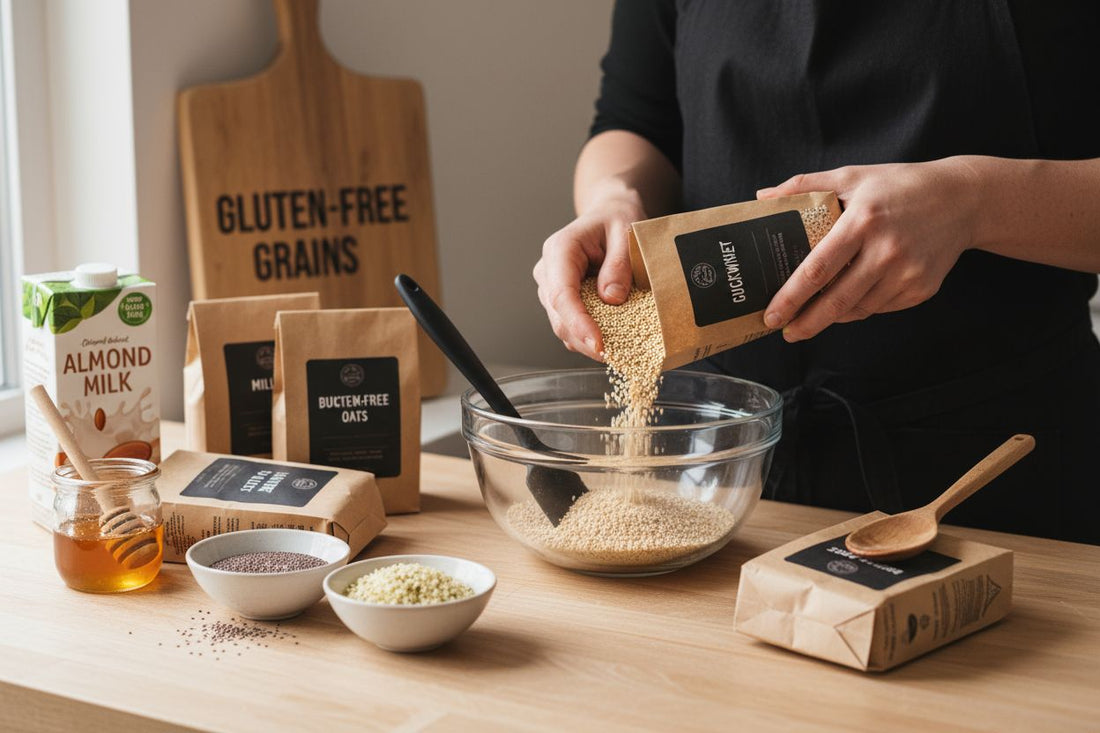
How to Make Gluten-Free Porridge: Nutritious and Easy Recipe
Share
Making porridge without gluten might sound like a bland compromise for breakfast lovers. But the truth is, ancient grains like quinoa, buckwheat, and millet offer a base that delivers both taste and nutrition beyond typical options. Quinoa and buckwheat are naturally gluten-free and incredibly high in protein, making your porridge more nourishing than you might expect. Forget any thoughts of dull, gloopy bowls – these grains unlock bold textures and rich flavours while helping you start your day right.
Table of Contents
- Step 1: Gather Your Gluten-Free Grains And Ingredients
- Step 2: Measure The Appropriate Proportions Of Grains And Liquid
- Step 3: Combine The Grains And Liquid In A Pot And Cook
- Step 4: Stir In Additional Ingredients For Flavour And Nutrition
- Step 5: Verify The Consistency And Adjust Cooking Time If Needed
- Step 6: Serve And Enjoy Your Gluten-Free Porridge
Quick Summary
| Key Point | Explanation |
|---|---|
| 1. Choose gluten-free grains wisely | Opt for quinoa, buckwheat, or millet for nutrition and flavour in your porridge. These grains are naturally gluten-free and nutritious. |
| 2. Measure grains and liquid accurately | Use a 1:3 grain to liquid ratio for optimal consistency. Precision in measuring ensures creamy, satisfying porridge. |
| 3. Monitor cooking temperature and time | Cook grains on medium-low heat to evenly absorb liquid without scorching. Adjust based on grain type for best results. |
| 4. Enhance porridge with nutritious toppings | Add protein boosters and fruits for flavour and nutrition. Incorporating seeds or nuts makes your porridge a well-rounded, hearty meal. |
| 5. Serve immediately for best texture | Enjoy porridge right after cooking using a warmed bowl. Prompt serving maintains its creamy consistency and enhances the breakfast experience. |
Step 1: Gather your gluten-free grains and ingredients
Creating a delicious gluten-free porridge begins with selecting the right ingredients. Your first step involves carefully choosing grains that are naturally gluten-free and packed with nutritional value. The key is understanding which grains will provide both excellent taste and robust health benefits.
For your base, consider ancient grains that are naturally gluten-free and incredibly nutritious. Quinoa, buckwheat, and millet stand out as exceptional choices. These grains offer remarkable protein content and provide a rich, nutty flavour profile that transforms ordinary porridge into a gourmet breakfast experience. Read more about our guide on understanding gluten-free ancient grains to deepen your knowledge.
When selecting your ingredients, prioritise certified gluten-free products to prevent cross-contamination. This means checking packaging carefully and looking for official gluten-free certification. Your shopping list should include:
- Quinoa or buckwheat groats
- Certified gluten-free oats (if tolerated)
- Plant-based milk (almond, coconut, or oat)
- Optional protein boosters like chia seeds or hemp hearts
- Natural sweeteners such as honey or maple syrup
Preparation is about more than just gathering ingredients. Consider toasting your grains lightly before cooking to enhance their natural flavours. This simple technique can elevate your porridge from basic to extraordinary, releasing deeper, more complex taste notes that will make your breakfast truly memorable.
By meticulously selecting your ingredients, you are setting the foundation for a nutritious, satisfying gluten-free porridge that supports your wellness goals and delights your palate.
Below is a summary table listing suggested gluten-free grains and key supporting ingredients, with notes on their purpose in creating a nutritious, flavourful porridge.
| Ingredient | Certified Gluten-Free Recommended | Purpose/Benefit |
|---|---|---|
| Quinoa or Buckwheat Groats | Yes | Base grain; high in protein, nutty flavour |
| Gluten-Free Oats (if tolerated) | Yes | Adds creaminess, improves texture |
| Plant-Based Milk (almond, coconut, oat) | Yes | For cooking; imparts flavour and creaminess |
| Chia Seeds or Hemp Hearts | Yes | Protein boosters, healthy fats |
| Honey or Maple Syrup | Yes | Natural sweetener and flavour enhancer |
Step 2: Measure the appropriate proportions of grains and liquid
Precision matters when crafting the perfect gluten-free porridge. Your measurements will determine the final texture, consistency, and overall satisfaction of your breakfast experience. According to nutrition experts, the golden ratio typically involves using one part grain to three parts liquid, though this can be adjusted based on personal preference.
Measuring tools are crucial for consistent results. A standard measuring cup or kitchen scale will help you achieve exact proportions. For a single serving, start with about 50 grams of your chosen gluten-free grain like quinoa or buckwheat. This amount provides a substantial base that will keep you feeling satisfied throughout the morning. When selecting your liquid, consider the type carefully. Plant-based milks such as almond, oat, or coconut can add extra flavour and nutritional complexity to your porridge.
The liquid-to-grain ratio requires careful attention. Too little liquid results in a dry, dense porridge, while excessive liquid creates a runny, unappetising mixture. Begin by adding 150 millilitres of liquid to your 50 grams of grain. This proportion offers a creamy consistency that most people find appealing. However, cooking grains like quinoa and buckwheat can be slightly different from traditional oats, so remain flexible and prepared to make minor adjustments.
Consider these practical tips for perfect measurement:
- Use a liquid measuring cup with clear markings
- Level off dry ingredients for accuracy
- Stir and observe consistency during cooking
- Add extra liquid in small increments if needed
Temperature and altitude can subtly influence how grains absorb liquid, so pay attention to your specific cooking environment. Some gluten-free grains might require slightly more liquid than others, so don’t be afraid to experiment and find your perfect balance. The goal is creating a porridge that is smooth, creamy, and tailored exactly to your taste preferences.
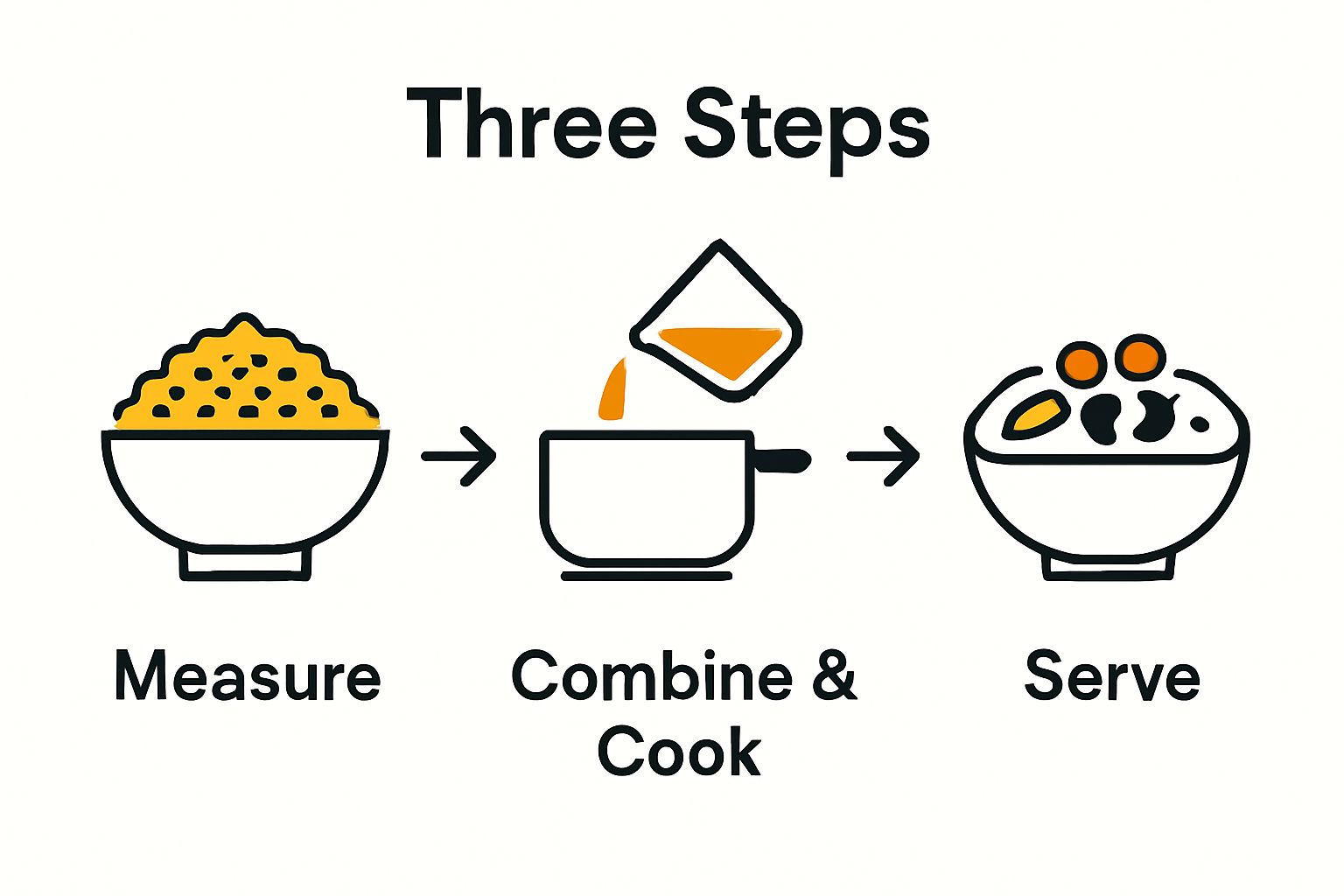
Successful measurement transforms simple ingredients into a nourishing, delightful breakfast that sets a positive tone for your entire day.
Step 3: Combine the grains and liquid in a pot and cook
Transforming your carefully measured ingredients into a delicious gluten-free porridge requires careful cooking technique. This step bridges your preparation with the final, mouthwatering result. Nutritional experts recommend paying close attention to cooking times and temperatures to preserve the nutritional integrity of your chosen grains.
Select a medium-sized pot with a heavy bottom to ensure even heat distribution. This prevents burning and helps your grains cook uniformly. Begin by placing your pot on medium-low heat, which allows the grains to absorb liquid gradually without scorching. Pour your measured liquid first, then gently add the grains, stirring to prevent immediate clumping. The initial moments of cooking are critical for creating a smooth, creamy texture.
Different gluten-free grains require slightly varied cooking approaches. Quinoa, for instance, benefits from a quick rinse before cooking to remove its natural saponin coating, which can impart a bitter taste. Buckwheat groats might need gentle toasting before liquid addition to enhance their nutty flavour profile. These subtle techniques elevate your porridge from ordinary to extraordinary.
Monitor your porridge closely during cooking, stirring occasionally to prevent sticking and ensure even heat distribution. Watch for visual and textural cues that indicate your porridge is progressing correctly:
- Liquid gradually being absorbed by grains
- Grains becoming softer and more translucent
- Mixture thickening to a creamy consistency
- No remaining hard or crunchy grain centers
Cooking times vary depending on your chosen grain. Quinoa typically requires about 15 minutes, while buckwheat might need 10-12 minutes. Trust your instincts and be prepared to adjust cooking time based on the specific grain and your desired consistency. Some people prefer a slightly firmer texture, while others enjoy a more creamy, almost pudding-like finish.
Remember that patience transforms simple ingredients into a nourishing, satisfying meal. Your careful attention during this cooking process will reward you with a delicious, nutritious gluten-free porridge that celebrates the natural beauty of ancient grains.
Use this step-by-step overview table to track each stage in making gluten-free porridge, with estimated times and main objectives for every step.
| Step | Approx. Time | Key Outcome/Objective |
|---|---|---|
| Gather gluten-free grains and ingredients | 5 mins | Select and prepare high-quality, safe base ingredients |
| Measure grains and liquid | 3 mins | Ensure precise ratio for ideal porridge consistency |
| Combine in pot and cook | 10-15 mins | Evenly cook grains to soft, creamy texture |
| Stir in additional ingredients | 2-3 mins | Customise flavour and nutrition with toppings |
| Verify consistency and adjust | 2 mins | Attain perfect creamy texture, adjust as needed |
| Serve and enjoy | Immediate | Present attractively and serve at optimal warmth |
Step 4: Stir in additional ingredients for flavour and nutrition
The final flourish of creating a remarkable gluten-free porridge involves thoughtfully selecting and incorporating additional ingredients that elevate both flavour and nutritional profile. Learn more about adding protein to your porridge naturally to maximise your breakfast’s potential.
Protein boosters are essential for transforming your porridge from a simple meal to a nutritional powerhouse. Consider incorporating seeds like chia, hemp, or pumpkin, which not only add protein but also provide healthy fats and micronutrients. Nuts such as almonds, walnuts, or pecans can be chopped and sprinkled on top, introducing a delightful crunch and additional protein content. Plant-based protein powders made from pea, hemp, or rice protein can seamlessly blend into your porridge, offering a smooth protein enhancement.
Flavour complexity emerges from carefully selected toppings and mix-ins. Fresh fruits like berries, sliced bananas, or diced apples introduce natural sweetness and essential vitamins. Dried fruits such as goji berries, raisins, or chopped dates can provide concentrated bursts of flavour and additional nutritional benefits. A drizzle of raw honey, a sprinkle of cinnamon, or a dash of vanilla extract can transform your porridge from basic to extraordinary.
Consider these strategic additions to enhance your porridge:
- Fresh seasonal fruits for natural sweetness
- Nuts and seeds for protein and healthy fats
- Spices like cinnamon or nutmeg for depth of flavour
- A small amount of coconut flakes for tropical notes
Temperature and timing matter when adding ingredients. Delicate berries are best added just before serving to maintain their shape and freshness. Nuts and seeds can be lightly toasted beforehand to intensify their flavour. Protein powders blend most smoothly when stirred in after cooking, preventing potential clumping or uneven distribution.
Your final porridge should be a harmonious blend of textures and flavours, a personalised creation that not only satisfies hunger but nourishes your body with wholesome, intentional ingredients. Each spoonful represents a celebration of nutrition and culinary creativity.
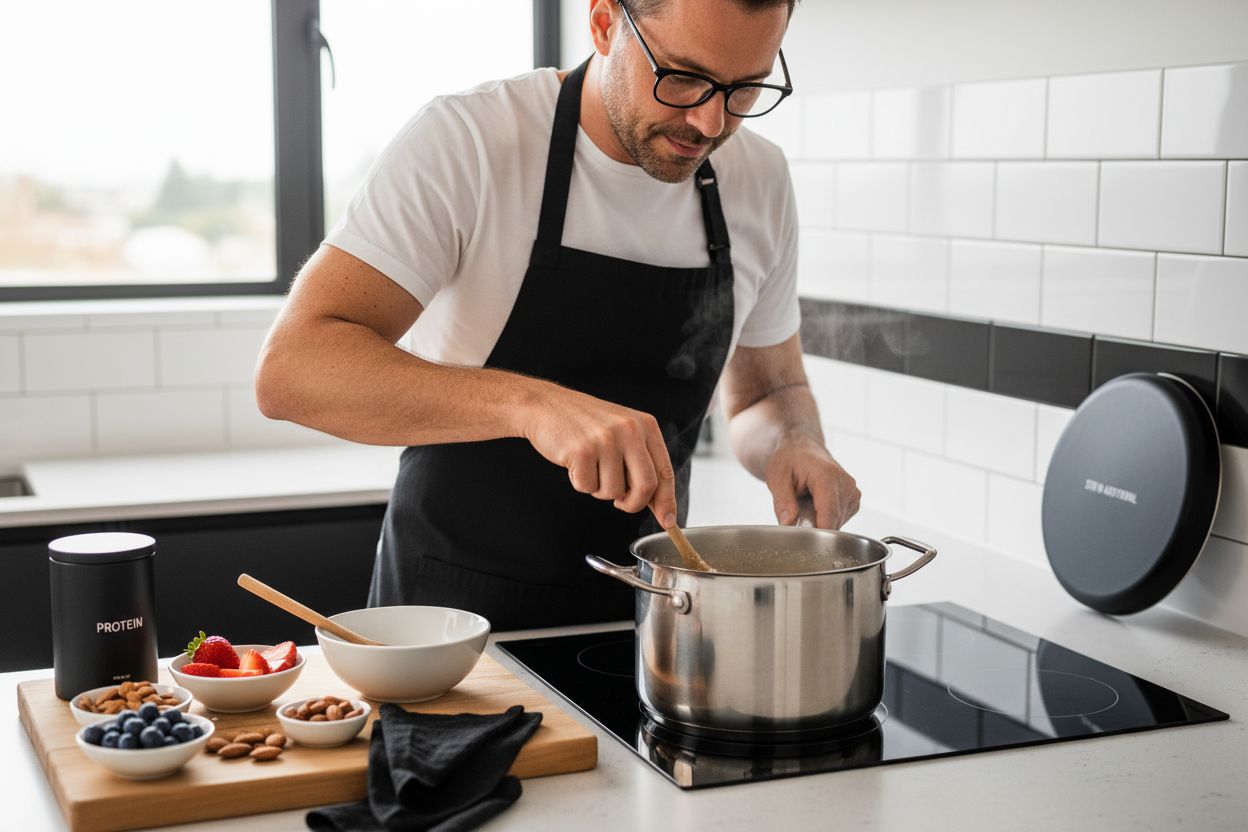
Step 5: Verify the consistency and adjust cooking time if needed
The art of creating perfect gluten-free porridge lies in understanding how grains behave during cooking and making real-time adjustments. Consistency is more than just a technical detail - it represents the difference between a good and an exceptional breakfast experience. Nutritional research emphasises the importance of paying attention to textural details during preparation.
Visual and textural cues are your primary indicators of porridge perfection. As your grains simmer, observe how the liquid transforms and how the grains absorb moisture. A perfectly cooked porridge should have a creamy, smooth texture without being overly runny or disappointingly dry. Different gluten-free grains respond uniquely to heat and liquid, so remain flexible and attentive throughout the cooking process.
To assess your porridge’s readiness, use a wooden spoon to test its consistency. Gently part the porridge in the center - it should slowly fill back in, indicating the right moisture balance. If the mixture appears too thick, gradually introduce small amounts of warm liquid, stirring continuously to maintain an even texture. Conversely, if it seems too thin, allow it to simmer uncovered for a few additional minutes, which will help excess liquid evaporate.
Consider these critical consistency checkpoints:
- Grains should be tender but not mushy
- Liquid should be mostly absorbed
- Porridge should have a glossy, smooth appearance
- Spoon should leave a brief trail when dragged across the surface
Temperature management plays a crucial role in achieving the ideal consistency. Lower heat allows for more controlled cooking, preventing sudden moisture loss or grain scorching. A gentle, patient approach transforms your porridge from a potentially mediocre dish to a culinary delight. Trust your instincts and remember that slight variations are part of the cooking journey.
Ultimately, your perfect porridge is a personal creation. Each adjustment brings you closer to a breakfast that not only nourishes your body but also delights your senses. Embrace the process, learn from each cooking experience, and enjoy the delicious results of your careful preparation.
Step 6: Serve and enjoy your gluten-free porridge
The final moment of your culinary journey arrives with serving your meticulously prepared gluten-free porridge. Coeliac experts recommend serving porridge immediately after cooking to preserve its optimal temperature and texture. Explore more delightful breakfast recipes to expand your morning repertoire.
Presentation transforms a simple meal into a sensory experience. Select a bowl that complements your porridge’s colour and texture. Ceramic or wooden bowls provide an aesthetically pleasing backdrop that enhances the visual appeal of your creation. Warm your serving dishes beforehand to ensure your porridge remains at an ideal temperature, preventing rapid cooling that might compromise its creamy consistency.
Arranging your toppings requires a thoughtful approach. Begin by creating a base layer of your perfectly cooked gluten-free grains, then artfully scatter your chosen additional ingredients. Fresh berries can be strategically placed to create visual interest, while a drizzle of honey or maple syrup can be swirled across the surface for an elegant finishing touch. Consider the balance of colours, textures, and flavours as you compose your breakfast masterpiece.
Consider these serving suggestions for maximum enjoyment:
- Serve immediately after cooking
- Use a warm bowl to maintain temperature
- Arrange toppings with visual creativity
- Pair with a complementary beverage like herbal tea
Temperature plays a crucial role in your dining experience. Your porridge should be hot enough to provide comfort but not so scalding that it burns your palate. Allow it to rest for a minute after cooking, giving the grains a chance to settle and the temperature to become more agreeable. This brief pause allows flavours to meld and ensures a more enjoyable first bite.
Remember that every serving of porridge is a personal celebration of nutrition, creativity, and mindful eating. Your gluten-free porridge represents more than just a meal - it’s a testament to your culinary skills, nutritional awareness, and commitment to wellness.
Elevate Every Bowl: Discover True Gluten-Free Nourishment
Does the struggle to find truly satisfying gluten-free breakfasts leave you reaching for bland options or sugary cereals that never seem to fill you up? If you are seeking a porridge that is not only easy to prepare but genuinely nutritious, your search can end here. Take what you have learned about the importance of carefully chosen ancient grains, precise preparation, and wholesome flavour, then elevate your mornings with our certified Gluten Free Flours range at Granavitalis. These premium ingredients are meticulously selected to ensure purity, flavour, and a nourishing start to your day.
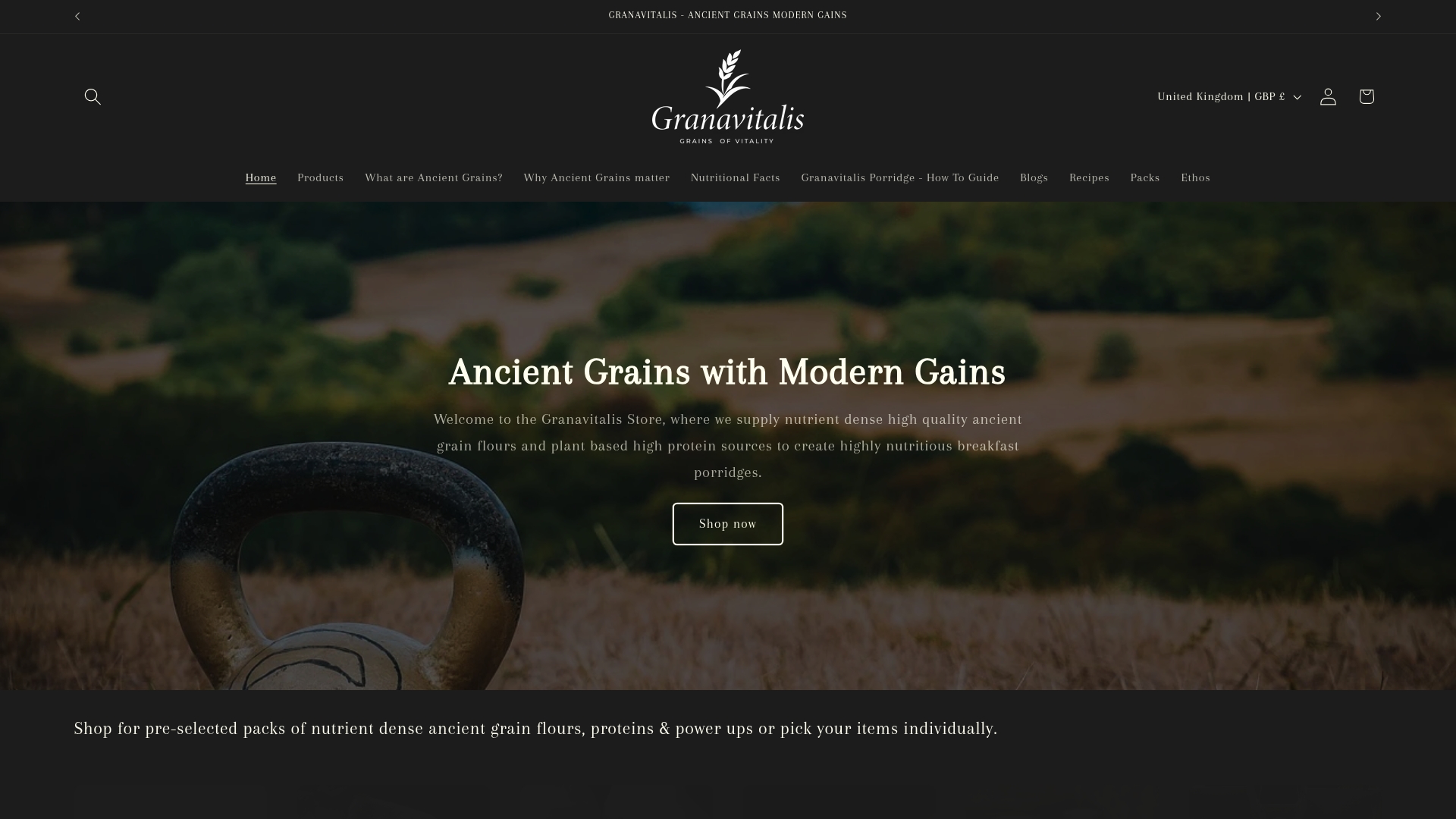
Experience a new era of breakfast that brings the tradition of ancient grains and modern nutrition directly into your home. We invite you to browse our thoughtfully curated Gluten Free Flours as well as our session-wide All Flours collection. For more inspiration, explore wellness tips and meal ideas at Granavitalis. Make your next breakfast a decisive step towards better health and true satisfaction—shop now and feel the difference in every spoonful.
Frequently Asked Questions
What gluten-free grains are best for making porridge?
Begin with ancient grains like quinoa, buckwheat, or millet, as they are naturally gluten-free and nutritious. Consider using a combination of these grains to enhance both flavour and texture in your porridge.
How do I measure the right proportions for gluten-free porridge?
A good starting point is to use one part grain to three parts liquid, such as 50 grams of quinoa to 150 millilitres of plant-based milk. Use precise measuring tools to ensure consistency for the best result.
What cooking techniques are important for gluten-free porridge?
Cook your grains in a medium-sized pot over medium-low heat to allow for even absorption of liquid. Stir occasionally and pay attention to visual cues, adjusting the heat as needed to achieve a creamy texture.
How can I enhance the flavour and nutrition of my gluten-free porridge?
Add protein boosters like chia seeds or nuts, and mix in fresh fruits or natural sweeteners such as honey. Aim to include at least one or two of these additional ingredients when serving for a more nutritious breakfast.
What consistency should gluten-free porridge have when it’s done?
Your porridge should be creamy and smooth, without being too runny or too thick. Use a wooden spoon to check – if it leaves a trail when pulled through the mixture, it’s ready to serve.
How should I serve gluten-free porridge for the best taste experience?
Serve your porridge immediately in a warm bowl, arranging toppings creatively for visual appeal. A well-plated porridge not only looks inviting but also enhances the overall enjoyment of your meal.
